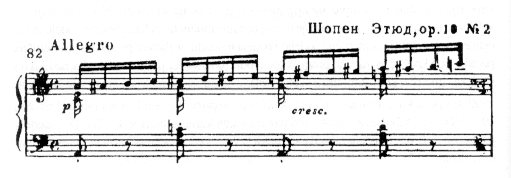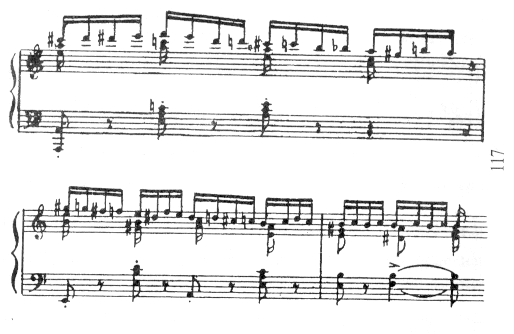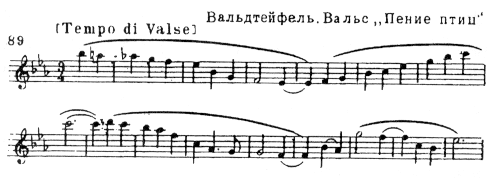|
ANTISYMMETRY AND COLORED SYMMETRY IN MUSICAL WORKS JADRANKA HOFMAN-JABLAN Name: Jadranka Hofman-Jablan, Musicologist (b. Belgrade, Yugoslavia, 1945). Address: Academy of Arts, Department of Musicology, Djure Jaksica 7, 21000 Novi Sad, Yugoslavia. E-mail: jablans@mi.sanu.ac.yu Fields of interest: Musicology (ethnomusicology). Publications: Symmetry of
Musical Form, Symmetry: Culture and Science, 6, 2 (1995), 249-251;
Simetrija muzickog dela, Zaduzbina Andrejevic, Beograd, 1995; Symmmetry
of Musical Work, Matematika i iskusstvo, Moskva, 1997; Tonality/Atonality:
Order/Disorder or Order/New Order, Order-Disorder, Book of Extended Abstracts,
Fourth Interdisciplinary Congress and Exhibition of ISIS Symmetry,
Haifa, 1998; Symmetry as an Aspect of a Musical Composition, ISAMA’99
(Ed. N. Friedman, J. Barrallo), (1999), 255-261.
Abstract:
Antisymmetry, multiple antisymmetry and colored symmetry (P-symmetry) is
applied to the analysis of musical works. The role of "local colored symmetries"
is distinguished.
1. COLORED SYMMETRY The theoretical backgrounds for the application of the colored symmetry in the analysis of musical works are given by A. V. Shubnikov and V. A. Koptsik in their monograph Symmetry in Science and Art (1974). In the symmetry analysis of a musical work from the point of view of antisymmetry and colored symmetry, the authors considered so-called "level of light and shade" and the "level of coloring": the first one is mostly represented by bivalent ("black-white") changes of musical parameters, while the second one by considering color changes, which means the permutations of musical parameters. The most of possible colored symmetries (simple antisymmetry, multiple antisymmetry, p-symmetry, etc.) are included in the general theory of P-symmetry (permutational symmetry) developed by A. M.Zamorzaev (1976, 1978). In the case of antisymmetry we have a possibility to analyze any alternating change of some bivalent quality, and to describe "black-white" contrasting of musical parameters (major-minor, piano-forte, ...). Because the structure of every musical work is hardly reducible to some regular repetitive pattern, antisymmetry is more present at a global, then in the local level. More refined, the multiple antisymmetry
represents a combination of several mutually independent bivalent properties
composed with some symmetry group. In the analysis of a musical work, it
introduces the possibility to follow simultaneous changes of that bivalent
properties and their correlation. Belov’s p-symmetry, based on the
cyclic permutation of p qualities could be used to follow similar
cycles that may appear in some musical piece, e.g., a cycle of modulations
beginning from some tonality, going further by a series of different tonalities,
and then back to the basic tonality. In the general P-symmetry,
we have the arbitrary permutation group of qualities (represented by colors),
and a possibility for a most subtle analysis.
2 MUSICAL APPLICATIONS In this work, we will try to classify different musical structures (rhythmical, melodic, harmonical, etc.) and their properties according to the colored symmetries that can be used for their analysis. In a global level, antisymmetry is present in the form of musical works. It is used as the basic construction principle of counterpoint monothematic pieces, based on the principle "question" – "answer": (proposta-risposta), in the fugue (dux-comes), or as the element of dynamic symmetry. For example, the structure of a two-part song (a-b), extended song (a-b-a-c-a), rondo (A-B-A-C-A), i.e. the relations b-c, or B-C, a non-standard rondo sonata form A-B-A-C-A-D-A-B-A (i.e., the relation C-D), thematic plane of the already mentioned Scarlatti’s sonata (A-B), or a dance in baroque suite (a-b) can be considered as the examples of antisymmetry. Similar are periodical structures of the type abbc called by L.Mazel (1979) semi-symmetric, the 8-bar form ab(2)-b(1)-b(1)-b(1)-b(1)-bc(2), as well as the example from the scene with letter from the second part of the opera Evgenii Onegin with the thematic sheme AbA-BcB-CbC, with the antisymmetry relations a-c and A-C. In the tonal plane, antisymmetry is represented by the opposite tonalities: major-minor, or polar tonalities. Antisymmetry is also the basic principle of complete musical harmony, when we are considering complementary intervals i and 12-i. In this case we can conclude that the complete structure of all natural major and minor tonalities, harmonic minor and melodic minor is mirror-antisymmetric. In a local level, antisymmetry appears in the regular alternation of accented and non-accented parts, in rhythmic structure, or in some local-melodic changes. All the structures based on alternation
can be also considered as antisymmetric. In a melody, the alternating uniform
change of ascending and descending parts consists of a melodic wave (Fig.
1). In the most of the cases, the beginning of a melodic wave is an
ascending part, but sometimes they appear exceptions from that rule (Fig.
2).
Figure 1.
Figure 2. Colored symmetry (or permutational symmetry) is present in all musical structures based on the recombination, where some musical material (rhythmical or melodic) is varied using permutations of its elements. The most illustrative examples of the permutation principle can be found in the minimalistic or serial music (e.g., in the works of P. Glass). The general theory of colored symmetry (P-symmetry) gives a chance to consider the compositions of colored symmetries. In this case, it is possible to consider every component of the colored symmetry as an independent symmetry property, and to follow simultaneity of the different musical parameters and their degree of correlation. For example, several antisymmetries may be present in different planes of a musical work (e.g., in its rhythmical and melodic level), and in this case we may consider that as the multiple antisymmetry. Anyway, the main difference between
the theory of colored symmetry used in the mathematical crystallography
and other sciences, and that applicable to the analysis of musical works
is the existence of the strongly periodical (mostly isometric) symmetry
group, composed with color changes, that not appears in musical works.
Therefore, for the more refined analysis of musical works from the point
of view of colored symmetry, some more recent approaches based on the "local
colored symmetries" or "topological colored symmetries" may produce the
better results.
REFERENCES
Shubnikov, V. A. and Koptsik, A. V. (1974) Symmetry in Science and Art, New York: Plenum Press. Zamorzaev, A.M. (1976) Teoriya prostoi i kratnoi antisimmetrii, Kishinev: Shtiintsa. Zamorzaev, A.M., Galyarskii, E.I., and Palistrant, A.F. (1978) Tsvetnaya simmetriya, eyo obobshcheniya i priloz’eniya, Kishinev: Shtiintsa. Mazel, L. (1979)
Stroenie muzikal’nyh proizvedenii, Moskva: Muzyka.
|


